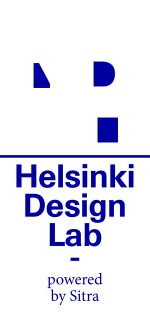Editor's note: We offered this blog as a platform to four HDL Global participants who are documenting the event for everyone to get a glimpse of how things are going down. This is one such post from Helen Han.

Helen Han introducing her film, Tending The Garden City. Photo: Pekka Mustonen
Immediately arriving at the HDL conference I was taken aback by the historical space in which it was held. Hundreds of intricate crests lined the walls which provided not only an impressive backdrop but also an appropriate juxtaposition between legacy and the future, government and design. My short film was the first thing to kick off the start of the conference and despite a few technical glitches, it seemed to have been warmly received. If anything, for myself, it reiterated the accessibility of the medium and the imperativeness of both government and design to find a common ground for communication not only between each other but more importantly with the public.
This was most clearly defined through Eric Rodenbeck’s presentation that proved the ability of data visualization to act not just as an illustrative tool of what is already understood but as a method to raise more questions and generate unknown realizations. As the conference host and moderator, Marco Steinberg also poignantly brought to light other design skill sets that are applicable to understanding complex governmental systems. For instance, the designer’s trained ability to analyze data while shifting scales in the evaluation of site and data proved a necessary tool for governmental bodies, especially when there is a need to understand national, regional and local situations simultaneously. Overall, with my own background in architecture, it was refreshing to listen to the expansiveness of my training applied to a more meaningful institution, beyond the somewhat superficial confines of designing beautiful artifacts.
Expanding from this notion of design effectiveness and potential influence, the next days’ panel discussion on sustainability opened up a plethora of ideas concerning political, social and cultural agendas in designing the future environment. In a midst of somewhat argumentative yet productive discussions that exposed differences between national agendas, the one common ground that was found was an optimistic notion of laying down the foundation now that would influence the immediate and distant future through the implementation of education and design.
Out of the midst of an unclear future, the designer’s ability to offer a communicative tool that presents a multitude of questions (and understanding what those right questions are) is what seemed, at least to me, the brightest steps in understanding the hardships that tomorrow might bring and how we can prepare in order to brace ourselves for that unknown tomorrow.


